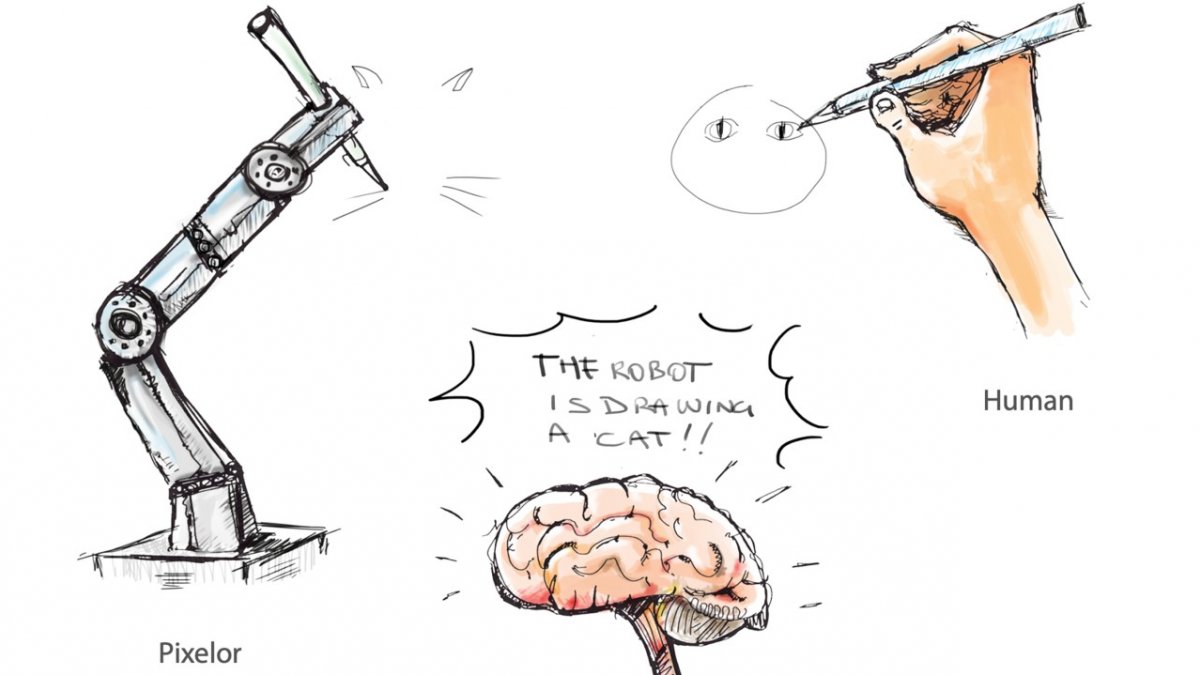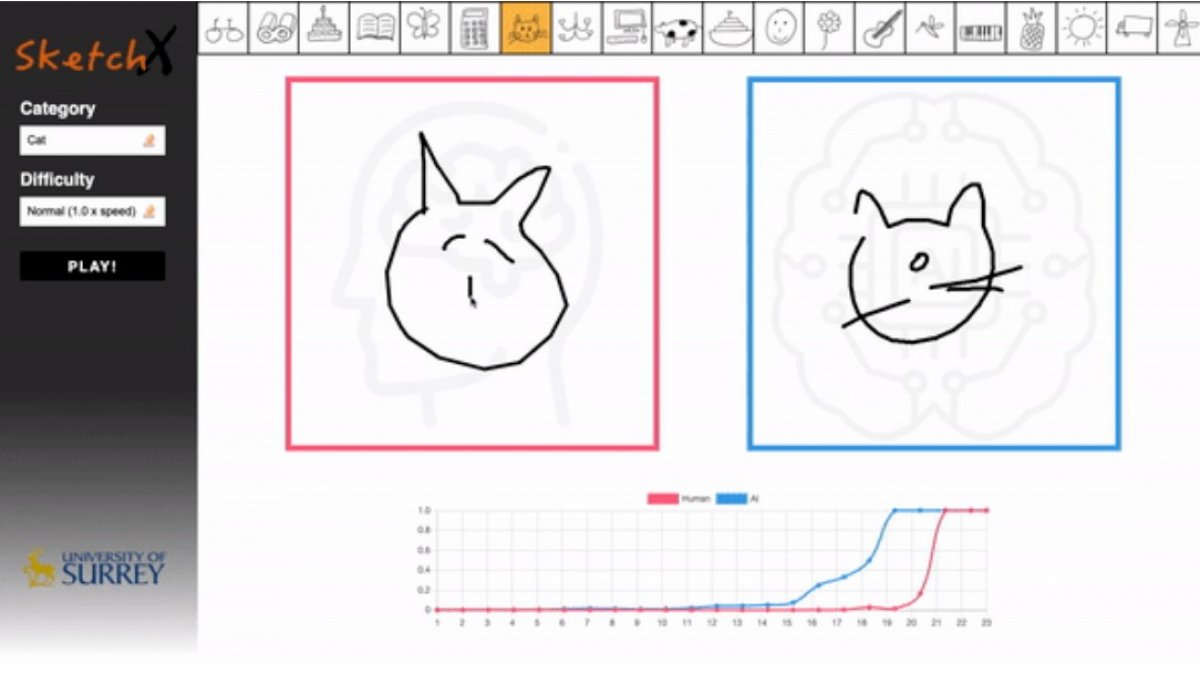Surrey research makes artificial intelligence even smarter
Dr Yi-Zhe Song at Surrey’s Centre for Vision Speech and Signal Processing (CVSSP) has created Pixelor, a sketching agent powered by Artificial Intelligence (AI) – and it’s better than humans when it comes to rendering an instantly recognisable sketch of a given subject.
Pixelor’s key claim is it can draw an image in a more intelligent and easily recognisable way than most humans.
To test this, Dr Song created Pixelary, a Pictionary-like game where a human plays against Pixelor to render an image on a given subject.
Quick on the draw
The aim is for participants to sketch an object or animal in the fewest lines possible. Both human and AI competitors are allowed one stroke at a time to gradually create an image. The winner is the person or AI whose sketch is recognised first.
And it’s bad news for human artistry. In early tests, Pixelor produced drawings that were recognised faster or as quickly as anything its human opponent created.
This may not sound particularly world-shattering. But it has huge implications because it means that AI can start to replicate the way human beings see the world, and create and process the images around them. It also gets us closer to AI learning how humans think. This is a brilliant advance – or maybe even a scary one if you fear the dystopian world of Skynet and The Terminator may be around the corner.
Pioneering technology
The research behind Pixelor is astonishing. The software relies on a massive dataset of human sketches that are sorted into different categories. An algorithm examines and prioritises the order of the strokes artists make when drawing a chosen subject. This is called optimal stroke sequencing.
This means Pixelor is trained with the knowledge of which strokes to draw early on to ensure early image recognition by either humans or AI devices.
“Our research into optimal stroke sequencing strategies means Pixelor can autonomously sketch a given visual concept, and achieve a recognisable rendition as quickly or faster than a human,” says Dr Song.
Real-world applications
The gamification element of Pixelor means it’s a fun way to spend a few hours. With CVSSP ranked 1st in the UK for Computer Vision, though, the fun research obviously has several real-world applications beyond leisure.
For a start, Pixelor’s ability to create an image and the related AI software’s ability to recognise it using only minimal visual clues has many benefits. These could include the use of AI in driverless vehicles or automated factory loading equipment, and refining and improving collision avoidance technologies. There are also potential applications in medical imaging.
The fun game could turn out to be a real game changer.
Conference paper
A paper, entitled Pixelor: A Competitive Sketching AI Agent: So You Think You Can Draw?, describing the far-reaching effects of this work will be presented at SIGGRAPH Asia 2020. The latter is an international conference celebrating innovation, advances and achievements in computer graphics, interactive techniques and beyond, which runs from 4-13 December.
Has AI just taken another small step in its evolution? We think it may have. Sadly, we can’t predict the future. Pixelor, however, could probably learn to draw it…
Learn more about studying at our Centre for Vision Speech and Signal Processing.



